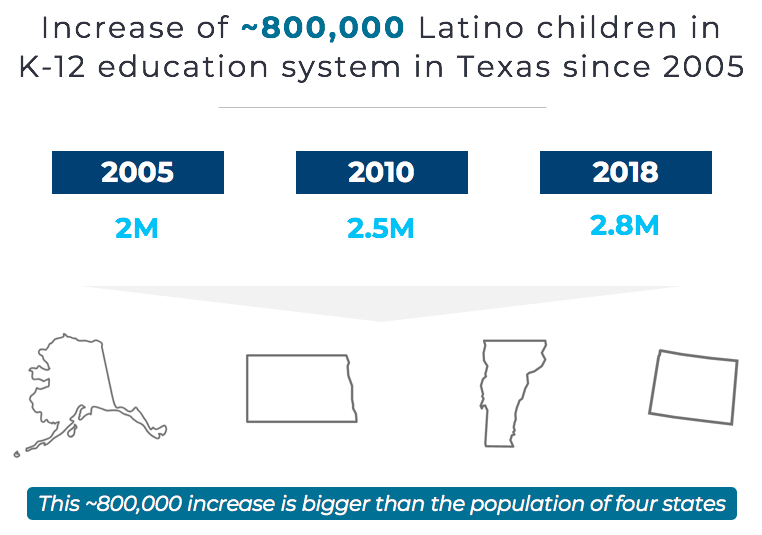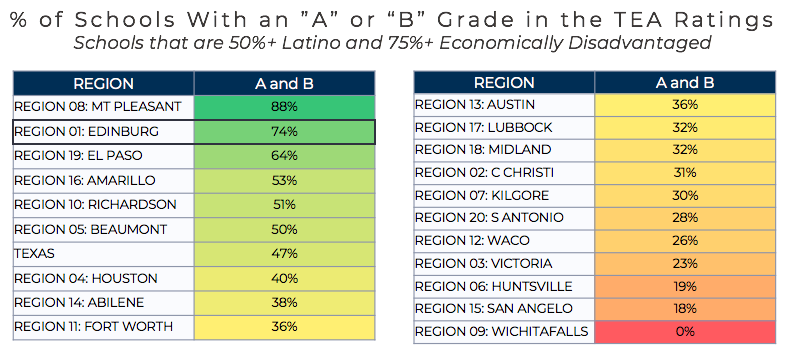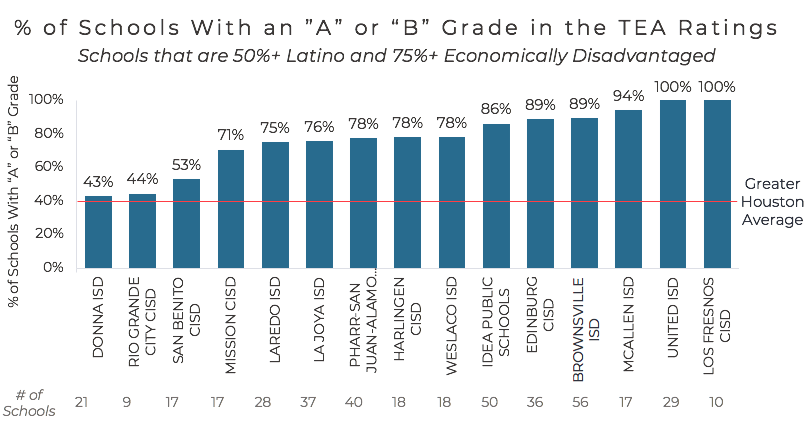|
Everything is bigger in Texas – including our demographic shifts: Since 2005 there has been an increase of 800,000 Latino children in the Texas public educational system, bringing the total number of Latino students to three million. For comparison, the 800,000 additional Latino students alone represent a student population that is larger than the independent populations of Alaska, North Dakota, Vermont, Wyoming, and Washington, D.C. In Greater Houston, Latino children make up half of the student population across 50 school districts. Texas’ future will be defined by the success our children achieve, and if Latino children succeed, Texas will succeed. Despite our best efforts, we’re falling short on this front. Across Texas, only 11% of Latino students are graduating college-ready. So, what will it take to accelerate Latino student success? The good news is that throughout Texas there are schools that are majority-Latino and majority low-income that are performing very well and there's a lot we can learn from these schools. In the recent A-F ratings released by the Texas Education Agency (TEA), 74% of Latino majority/low-income majority-schools in the Rio Grande Valley (RGV) earned an "A" or "B" grade. This stands in stark contrast with clusters of schools with similar demographics in other regions (as defined by TEA). Region 1: Edinburg (Rio Grande Valley) stands out. There are over 400,000 students in Region 1 with 500+ schools that are majority Latino and majority low-income. Looking at the top fifteen school districts (in size) in Region 1, you can see a combination of both traditional and charter school districts doing well with majority Latino/majority low-income schools: The Latino community is very diverse, so we can't assume that what works in the Rio Grande Valley (RGV) will automatically work anywhere else; however, I think there's a lot we can learn from the success of these schools in the RGV.
There's only so much you can learn from the data and every number represents a student, a school, a family, and a community - each reflecting a complex reality. If I had a magic wand, here are the questions I'd want to explore further to learn more about the RGV:
Comments are closed.
|
Andy CanalesPassionate education leader. Son of Salvadoran immigrants & first generation college graduate. Archives
April 2023
Categories
All
|



 RSS Feed
RSS Feed